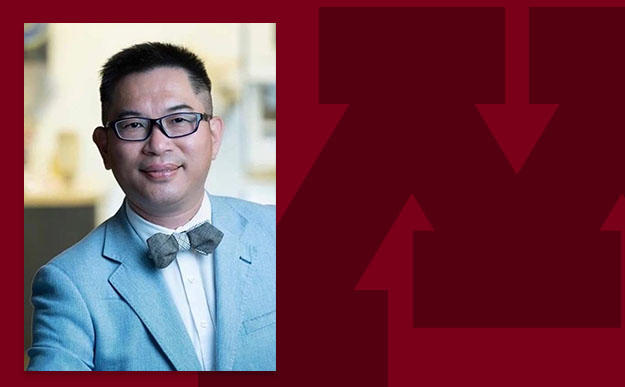Expanding the scope of trauma care through teledentistry

A CGHSR Global Health Seed fund, along with two other recent grant awards, will propel a teledentistry effort focused on identifying and treating dental trauma.
Boyen Huang, DDS, MHA, PhD who joined the School of Dentistry in 2020 as an associate professor in the Division of Dental Public Health after 18 years as a faculty member in Australia. He brings with him experience in pediatric dentistry, outreach, and telehealth. In the short time that he has been in the United States, Huang has received three grant awards: a $20,000 IADR Regional Development Program funding award, $6,000 from the Minnesota Masonic Charities, and most recently, a Center for Global Health and Social Responsibility Global Health Seed award of $25,000.
The three grants will support Huang’s development of an app called Teledental, conceived in partnership with an Australian government agency to triage dental trauma. It started as a way of diagnosing caries virtually, but quickly shifted toward use in emergency rooms.
“When you experience a trauma, most of the time, you are sent to the emergency room,” Huang explained. “But the nurse or doctor may not be equipped with dental knowledge, and might not know how to manage a dental emergency. Since not every hospital has a dentist or dental surgeon, the app provides immediate communication and a consultation.”
Nurses or doctors upload photos of the injury, and a dentist examines the image and determines whether it requires immediate attention. Huang hopes that, once the app proves successful in emergency rooms, he and his team can expand its presence into schools, as well. “Based on research and clinical experience, the injury usually happens at school or at home,” he explained. “The first witness would be a parent or a teacher, so using the app could help them know whether they need to be worried.”
Eventually, Huang will continue the app’s development in conjunction with artificial intelligence, allowing for the diagnosis of traumatic injuries without the need for a doctor on call. For now, he is excited to continue studying the sensitivity and reach of the app in emergency rooms, with local doctors and with researchers and doctors in Thailand and Australia.
The app has immense potential to change the way traumatic dental injuries are treated—and funding sources agree. The three grants Huang received are competitive and prestigious. The International Association for Dental Research provided Huang with fully ⅓ of the funds they sponsor in a year to continue research and development. A Masonic Charities grant in collaboration with the Department of Pediatrics will provide the opportunity to present the app at the Minnesota State Fair in 2022. Most recently, the Global Health Seed fund will help as Huang and his team compare the app’s use in Minnesota and in Thailand, based on differing emergency care systems.
Huang is grateful for the investment in his vision, made possible in part by his role at the University. “I found that Minnesota is very welcoming to research opportunities like this,” he explained. “In Australia, we may have received one grant—but here, with a good reputation and the University to support us, we have been very successful.”
He is excited to continue working on this international, interprofessional endeavor that allows him to work with professionals and researchers across the world. “I have gotten to work with many people and in many environments, which provides more visible outcomes,” he said. “Our intention is not to have some ‘fancy’ technology, but to improve accessibility in a very real way.”
Most of all, Huang looks forward to being part of what he considers the future of dentistry: telehealth. “Technology is so important to dental education,” he explained.
“When I was a dental student, there was no such thing as a dental implant. Now, every student and dentist knows how to do them. I suspect that teledentistry will be much the same: whether dentists use it in their practice, they will know about it. This is something that will change dentistry, and that is something I am excited about.”